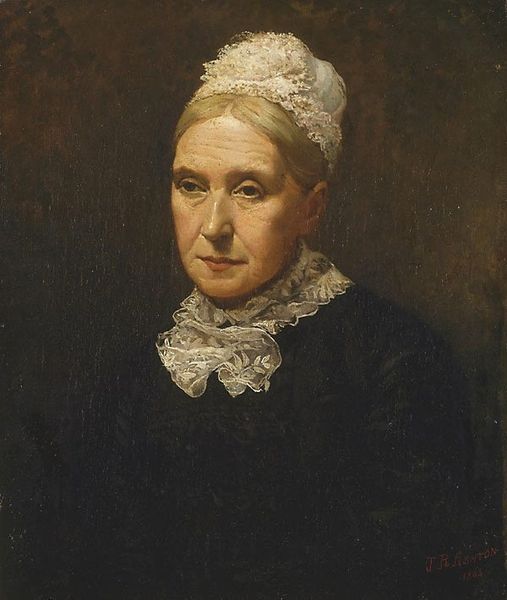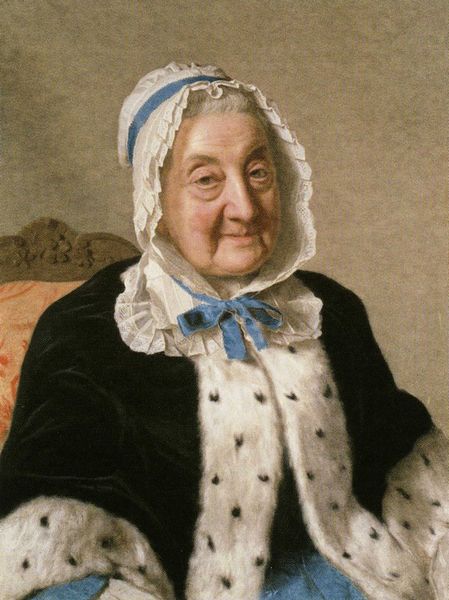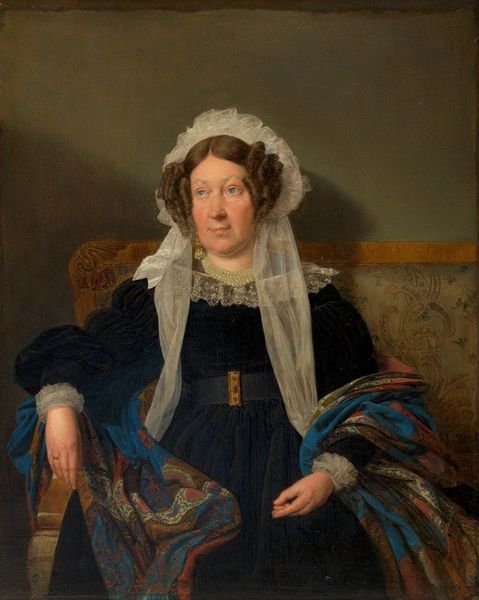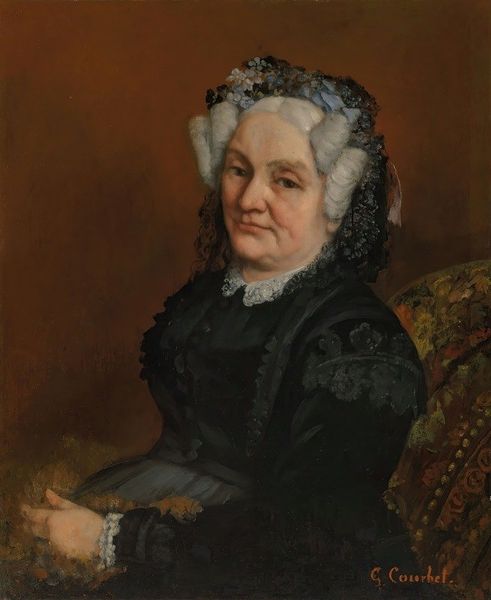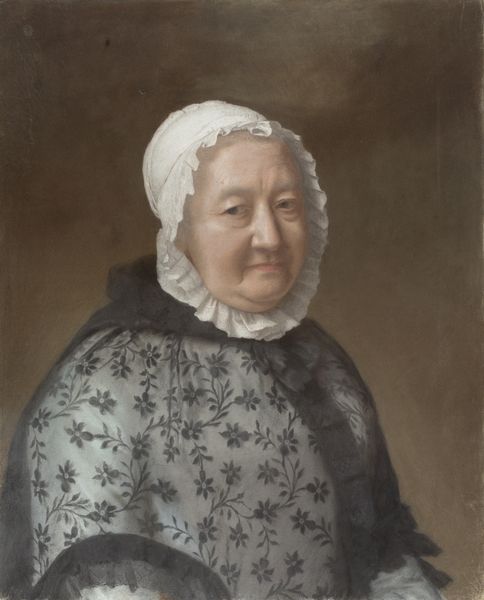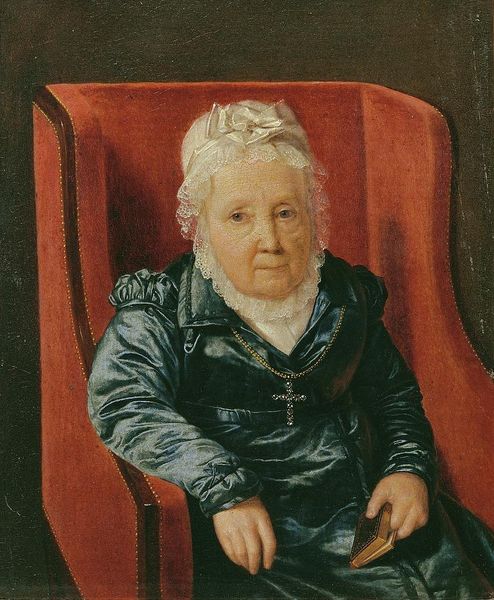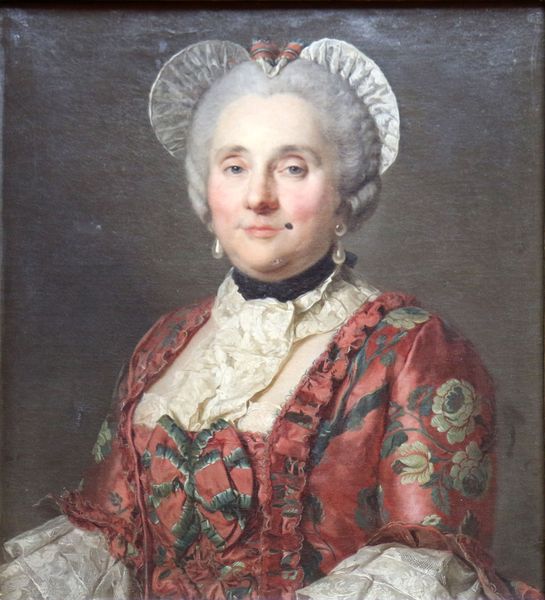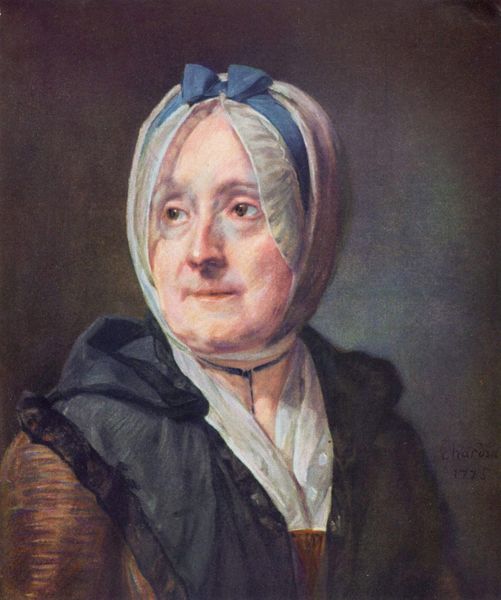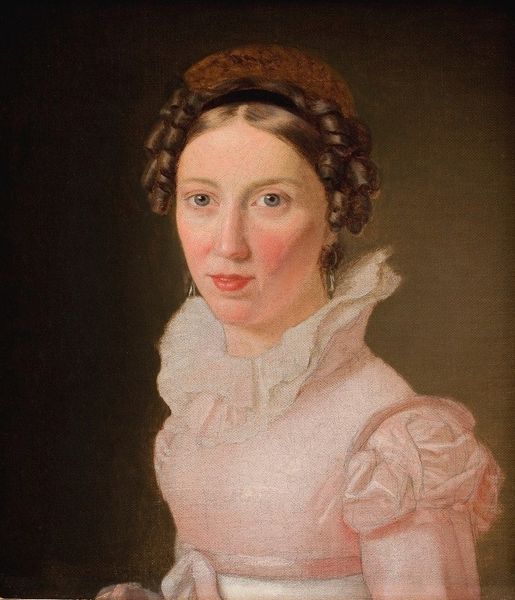
painting, oil-paint
#
portrait
#
portrait
#
painting
#
oil-paint
#
romanticism
#
genre-painting
#
academic-art
Copyright: Public Domain: Artvee
Editor: So, here we have Ferdinand Georg Waldmüller’s portrait, "Rosina Wieser im 83. Lebensjahr," painted in 1820. I'm struck by the texture of the fur stole and the lace on her bonnet. How can we approach it? Curator: Let's consider this portrait as a product of its time. What materials were readily available, and how did they influence the artist's choices? The oil paint itself, think about the process of grinding pigments and mixing them with oil. This labor-intensive act shaped the possibilities for representing wealth and status. Editor: So you're saying the material properties dictate, in a way, what can be portrayed? Like the very nature of the fur collar suggests Rosina's social standing due to the cost of materials, like fur, pigments, and fine fabric? Curator: Precisely! Consider the supply chains involved. Where did the fur come from? Who processed the lace? The social implications are interwoven into the very fabric - no pun intended - of the painting. Waldmüller is not just portraying an individual but an economic reality. Editor: And how does Romanticism come into play here? Because, from what I know, it typically leans on an artist’s imagination and more free-form interpretations, not on documenting the wealth of the subject... Curator: Think about Romanticism not as solely about imagination, but about feeling and experience. Waldmüller meticulously represents materials, perhaps to evoke a feeling of authenticity. The portrait isn’t just about Rosina, but about presenting her world through its materiality. What does the very application of the paint and textures say about craft in that time? Editor: I see what you mean. I was thinking about the finished object as a presentation of status, not about how each layer of production contributes to that meaning. Curator: Exactly! It encourages us to think about what the very production of an artwork tells us about its time. Editor: Thanks for showing a new perspective on that time!
Comments
No comments
Be the first to comment and join the conversation on the ultimate creative platform.
